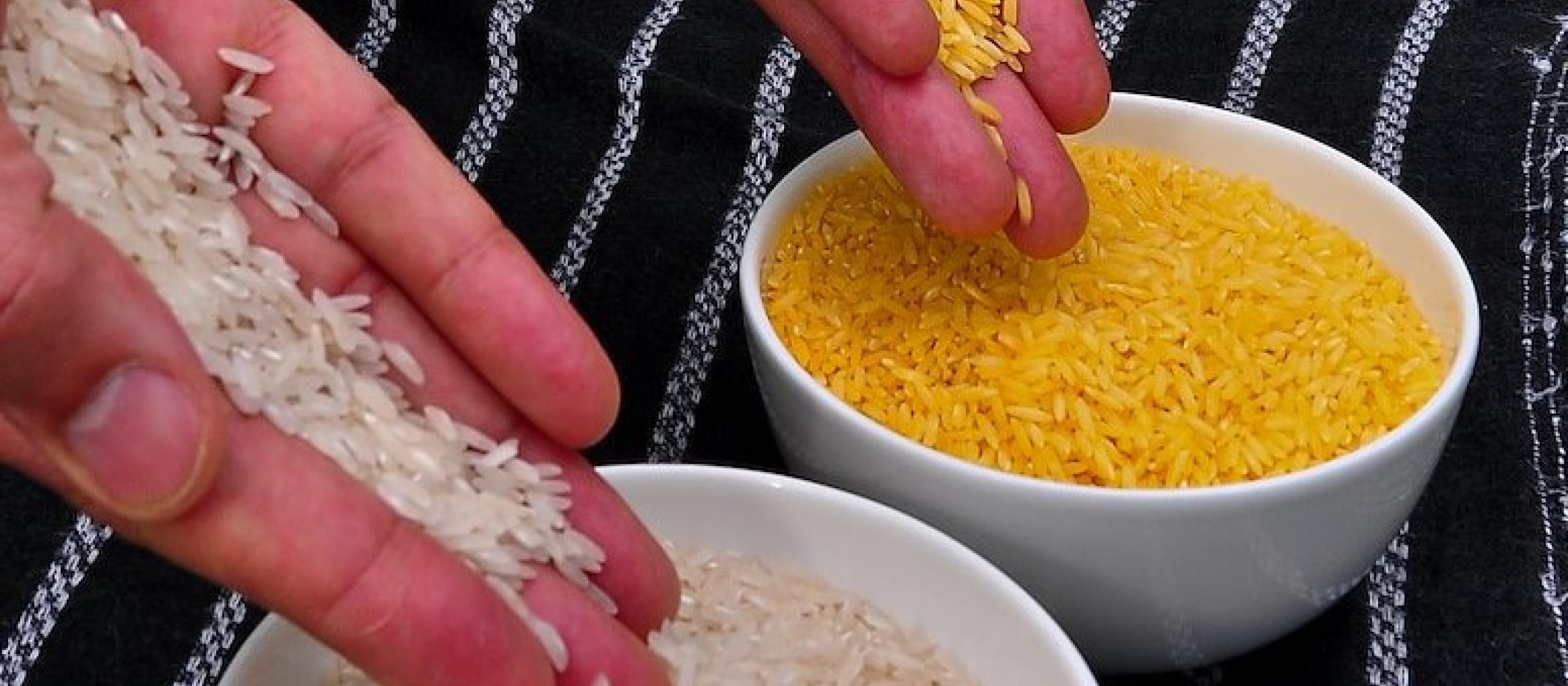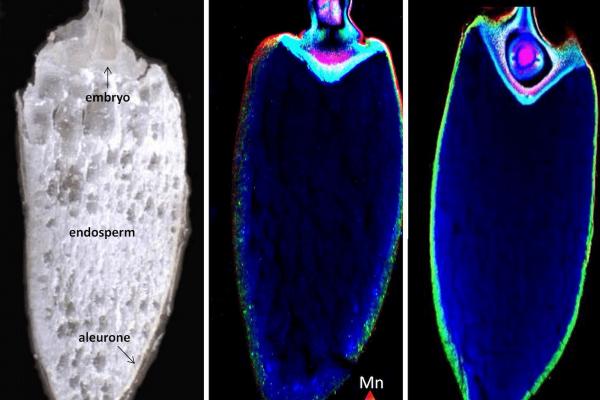- HomeHome
-
About ACIAR
- Our work
- Our people
-
Corporate information
- ACIAR Audit Committee
- Commission for International Agricultural Research
- Policy Advisory Council
- Agency reviews
- Executive remuneration disclosure
- Freedom of information (FOI)
- Gifts and benefits register
- Information publication scheme
- List of new agency files
- Contracts
- Legal services expenditure
- Privacy impact assessment register
- Commonwealth Child Safe Framework
- Benefits to Australia
- Careers
- 40 years of ACIAR
-
What we do
- Programs
- Cross-cutting areas
- Resources
- Where we work
-
Funding
- Research projects
- Fellowships
-
Scholarships
- John Allwright FellowshipScholarships to study in Australia for ACIAR partner country scientists to have Australian postgraduate qualifications
- ACIAR Pacific Agriculture Scholarships and Support and Climate Resilience Program
- Alumni Research Support Facility
- Publications
- News and Outreach
Date released
11 January 2019
- Increasing iron and zinc levels in grain staples such as rice and wheat through biofortification can alleviate micronutrient deficiencies.
- In Bangladesh, approximately half of children and 70% of women are iron-deficient.
By his own admission, Dr Alex Johnson has had one great advantage in his life: he always knew what he wanted to do.
‘I just always wanted to grow plants, study plants and eat plants,’ he says. ‘I grew up in Washington, DC, and I remember my mum had a little tiny garden. From the moment I could walk I would be out there planting: watermelon, beans, corn. I was fascinated that you could grow your own food in your own backyard.’
At university he considered medicine. ‘But as soon as I had my first class in plant biology I was hooked.’ An undergraduate degree in biology led him to Virginia Tech and an MSc in plant tissue culture—an essential skill for any ambitious plant biologist. ‘Then I told my supervisor I really wanted to do my PhD on genetically modified potatoes. I’ve always been interested in working with and improving the staple crops that people eat.’
Johnson’s green odyssey has led him to the University of Melbourne, via the universities of Cambridge and Adelaide. In his plant nutrition laboratory at the university, he leads a team of researchers specialising in biofortification of rice and wheat.
‘Biofortification is breeding plants to have more vitamins and minerals,’ Johnson says, pointing out that it is a new direction in the long history of breeding food crops.
‘Through most of human history, we’ve been breeding crops to be high-yielding and really good sources of carbohydrate. That’s enabled us to feed billions of people. Biofortification is a step further. We still want to have lots of carbohydrate in food crops, but in addition we want to start enriching them with the most important micronutrients for the human diet.’
In 2011, his plant nutrition laboratory created a genetically modified rice that had significantly more iron and zinc than ordinary rice. Why rice? As Johnson and his colleagues wrote in their paper on the discovery, ‘Rice is the primary source of food for billions of people in developing countries, yet the commonly consumed polished grain contains insufficient levels of the key micronutrients—iron, zinc and vitamin A—to meet daily dietary requirements.’
‘Millions of people around the world suffer from deficiencies in these micronutrients,’ he says. ‘Iron deficiency is the most common nutritional deficiency in the world. It affects 30% of the population—more than two billion people—and causes anaemia, which leaves people weakened and tired. Zinc deficiency causes stunting and learning difficulties in children. It affects about two billion people. Provitamin A deficiency, which affects about 150 million people, or six times the population of Australia, causes blindness and increased susceptibility to infections.’ Because of their negative impacton people in childhood and youth, these deficiencies have been estimated to cost 63 million life years annually.
Micronutrient deficiencies have an economic impact on entire societies, Johnson says. ‘They trap people in poverty, and people enter the workforce tired or stunted or fatigued, a long way short of their potential. Think of how unproductive you are when you’re sick at work and multiply that by millions.’
The collective term for micronutrient deficiencies is hidden hunger. ‘When I was growing up, the focus was on people starving for calories. Hidden hunger is starving for micronutrients, and it can happen whether you are getting too few calories or too many,’ Johnson says.
Fortification of foodstuffs with micronutrients during production is a longstanding and effective practice, but limited. ‘You have to keep adding the micronutrient every single time you produce a batch of the foodstuff. Biofortification is simpler, and you only have to produce the biofortified crop once.’
And biofortification means the depleted food staples that create hidden hunger can also be the most effective way to abolish it. ‘Because so many people eat rice, all you have to do is make small changes to have a really huge impact on hundreds of millions of people,’ Johnson says.
While it is true that iron and zinc deficiencies can be partially addressed by eating more leafy vegetables, Johnson does not see this as a complete solution. For one thing, the burden of raising these often-seasonal crops falls on rural populations who are already suffering from hidden hunger. These vegetables can also be more expensive to buy.
Johnson’s aim is to see iron and zinc biofortified rice planted in Bangladesh, where almost 80% of cultivated land is dedicated to rice, but approximately half of children and 70% of women are iron-deficient.
There are two other compelling reasons for biofortification: population and climate change. ‘The world is headed towards at least 9.3 billion people by 2050. That’s not far away,’ Johnson says.
‘We have to work on all aspects of food production: making more food, distributing it more efficiently, but also focusing on the quality of what we produce. Since the first Green Revolution began in the 1960s, our capacity to breed new crops has really improved. We have so many wonderful tools. We have classical genetic engineering, and new tools such as gene editing. We need to use them all to grow more food as well as more nutritious food.’
Climate change includes the global effect of atmospheric change.
‘As CO2 increases in the atmosphere, that has huge impacts on terrestrial plants,’ Johnson says. ‘CO2 is their food, so they get bigger and you see increases in yield. This is particularly true for crops that use what we call C3 photosynthesis, like wheat and rice. But there are other things happening. Protein decreases in C3 grains, and iron and zinc decreases too, by about 10%. You might get increased yield but the grain quality suffers.’
The burden of keeping a world of 9.3 billion fed and healthy could easily seem insurmountable. Progress is incremental. The plant nutrition laboratory recently discovered that wheat has 21 copies of the nicotianamine synthase gene that was originally modified to increase iron and zinc in rice.
‘It does sometimes seem like a mega challenge,’ Johnson says. ‘But I like to work on big challenges.’
THE CHALLENGES
Biofortifying staple grains to alleviate global micronutrient deficiencies may present a great challenge for researchers, but this is by no means the only hurdle to be overcome. There is also the added complexity of uptake of these biofortified grains by both producers and consumers, as Dr Eric Huttner, ACIAR’s Research Program Manager for Crops, explains.
For producers, a grain variety with higher levels of vital micronutrients such as zinc and iron also has to have other appealing characteristics, such as higher yields and disease resistance. ‘Unfortunately, the [higher micronutrient] trait is invisible, and farmers have not been rewarded for sowing it,’ Huttner says.
However, he cites a project ACIAR is funding in Bangladesh that could make biofortified wheat more attractive to farmers. A consortium under the International Maize and Wheat Improvement Center (CIMMYT) is working on a wheat-blast resistant strain to fight the fungal disease which devastated key wheat districts of south-western Bangladesh in early 2016. A possible bonus of this research is that one strain of wheat that shows signs of resistance also appears to have elevated zinc levels.
Another concern is uptake by consumers. Traits like increased iron and zinc are invisible, so what is needed, Huttner says, is a nationallevel approach to marketing nutrition. A good example is the biofortified rice flagship: golden rice, which has elevated levels of provitamin A. The rich golden colour of the polished grain makes this rice very obviously different to white, unfortified polished rice.
Lastly, there’s the question of genetic modification, which is often used to create biofortified crops such as golden rice and high iron and zinc rice. Genetic modification has been a vexed topic for some environmental and health activists. However, as Nobel Laureate Sir Richard Roberts said in June 2018, ‘Examples of the benefits of the new GM technology for citizens of the developing world include golden rice and halting both banana wilt and the fall armyworm’. Not only is there scientific support for biofortified crops such as golden rice, but the governments of Australia, Canada, New Zealand and USA have approved it as safe for consumption and registrations have been applied for in the Philippines and Bangladesh.
For a copy of Dr Alex Johnson’s presentation see www.crawfordfund.org/events




